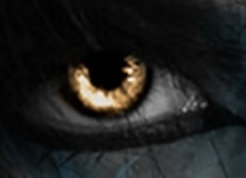Biblical Plague Of Snakes Has Returned
By James Donahue
"And the people spake against God and against Moses: Wherefore have ye brought us up out of Egypt to die in the
wilderness? For there is no bread, neither is there any water; and our soul loatheth this light bread. And the Lord sent fiery
serpents among the people, and they bit the people; and much people of Israel died." Numbers 21:5-6
Students of the Old Testament are familiar with the story in Numbers when the Israelites were beset
by deadly snakes in the desert that were killing the people with their bites. According to the story, God told Moses to smelt
a bronze image of a serpent and to place it atop a pole set in the ground. Moses then instructed everyone bitten by a snake
to gaze upon the image and they would survive the snakebite.
It was, at best, a story found difficult to believe since (a.) snakes generally don’t live in
the desert, and (b.) the smelting of a bronze image would require a furnace capable of retaining heat up to 2,300 degrees
Fahrenheit, a supply of copper and tin to be melted into a proper mix to manufacture liquid bronze, and then a manufactured
mold of the body of a large snake. This is not stuff that Moses or the Israelites would be carrying with them in the desert,
or that they could magically produce in such a barren environment.
The story contains a lot of symbolism. The snake on a stick might be seen as an amulet and thus a
test of faith among the people who gazed on it to be healed of the effects of the snake venom in their bodies. The story thus
takes on a strange parallel to the practice of voodoo witchcraft. Those who looked on the bronze snake image and believed
were healed, and those who refused to believe, died.
We have some other problems with this snake story. That the snakes were sent into the desert as punishment
because the people were complaining about lack of food and water, and thus losing faith in their God during these extremely
harsh circumstances appears to portray an angry and malicious god figure that lacks compassion and love for "his people."
It portrays a dark side of the Creator and thus provokes a fear among believers that has a binding effect. It robs the people
of free will and teaches that everybody does it "god’s way" or suffer the consequences.
So can snakes live in the desert? While it isn’t their natural habitat, reptiles appear to be
able to exist in hot dry desert sands quite well, as is currently being discovered in Southern Iraq.
There the natives say swarms of snakes, man of them deadly, are invading the desert sands and attacking
people and cattle. They say the snakes have been driven from the natural marshes where they live because the Euphrates and
Tigris rivers are going dry.
"We have been surprised in recent days by the unprecedented number of snakes that hae fled their habitat
because of the dryness and heat," said Wissam al-Assade, a veterinarian in the town of Chabaysh, located near a marshland
along the Euphrates River.
Among the worst of the snakes are vipers and cobras that move with lightning speed and shoot deadly
venom when provoked.
So why are the Tigris and Euphrates Rivers going dry? After all, these great rivers have been flowing
for thousands of years and they made it possible for the great civilizations of Mesopotamia along the Golden Crescent to spring
up in the distant past. You should know the culprit has been human intervention. Dams built on these rivers in Turkey and
Syria are holding back water needed by the Iraqi farmers and natural forces are now out of balance.
So now we know that a plague of snakes in the desert is possible. What we need now is another Moses
to show up with his bronze snake on a pole to offer the natives a magical cure for deadly snake bites.

